“Kaki Mochi” is a traditional Japanese snack for children. Recently, fast food is overflowing on the streets, and you can easily find many different delicious sweets at supermarkets. In comparison with these fast food, “Kaki Mochi” is slow food as it takes so many time and effort to make. Today, we are going to explain how to make Kaki Mochi, various tastes and shapes and where to find the delicious Kaki Mochi.
What is Kaki mochi?
Kaki mochi is a Japanese confectionery that consists of processing the okaki made from glutinous rice and roasting them until golden brown. It’s a type of bite-sized Japanese sweet made from glutinous rice or mochi. You can lightly toast them in a toaster oven with salt but also delicious with soy sauce, sugar, etc. There are two versions of Kaki mochi; the Chiba version and the Hokuriku version.
Locals make the Kaki mochi in the Hokuriku version by adding salt to steamed glutinous rice, pounding it with a pestle and mortar, or using a machine to make mochi, and placing it in a wooden frame. They made them into sticks, left for several days, sliced thinly, tied with hemp rope or straw, and dried in a cool, well-ventilated place for one to two months. While the Chiba version, locals eat them as a side dish for tea, fried in oil or grilled over charcoal.
Japanese believed that kakimochi (ketsumochi) came from the kagami mochi that they offered on New Year’s Day. Since they chipped the mochi (broken) by hand, they call it Kakimochi. In some cases, Kakimochi is also used for botamochi, ohagi, and soba-zaki (soba-mochi).The big one, which varies in size depending on the type, is deep-fried kakimochi with black soybeans. The thin and small ones are brown rice fried kakimochi. Okaki is the wife’s word for kakimochi, and like rice and tea, the character for rice cake was omitted from the word. In general, kakimochi refers to large pieces of 5 centimeters or more. Kakimochi and okaki are often square because they are dried and baked.
Etymology

Locals choose to name it Kaki mochi to conjure up images of hailstones; smaller arare are similar in size and shape to hailstones, while others can vary significantly in size, flavour, and shape. In Hawaii, where it was introduced in the 1900s, arare is also known as kaki mochi or mochi crunch.
Kaki mochi History

One of Japanese’s favourite snacks is kakimochi arare, also known as “mochi crunch,” which started in the 1900s by Japanese plantation workers. The small crackers taste great baked into chocolate chip cookies or dusted with a little li hing mui (dried plum) powder. The Tone River basin’s breadbasket produces delectable, sticky glutinous rice.
Chiba Prefecture, which benefits from its mild climate, water, and lush surroundings, is the greatest producer of early-season rice in eastern Japan. The most popular type of rice grown in Chiba Prefecture is koshihikari. It stands out for being a little bit mushy and sticky and for not hardening even after cooling. Similar to this, the early-maturing variety “Fusaotome,” which independently created by Chiba Prefecture, has been produced since 1998.
Kaki mochi Recipe

Kaki mochi Ingredients
| Ingredients of Kaki mochi for 1 person | Measurements |
|---|---|
| Sticky rice | 150g |
| Taro (peeled and grated) | 160g |
| Salt | 28g |
| Sesame black | 28g |
| Nori | 8g |
| Baking soda | 14g |
How to make Kaki mochi
Put the steamed glutinous rice and the other ingredients into the mochi-making machine.
When it rises, spread it into a kamaboko shape. After two days, it will become hard, so use a knife to cut it into 2-3 mm thick pieces. Line them up one by one and dry them in the shade for two days, or place them in a net bag and hang them in a well-ventilated place.
It dries after about half a month, so save it and eat it as needed.
How to eat Kaki mochi
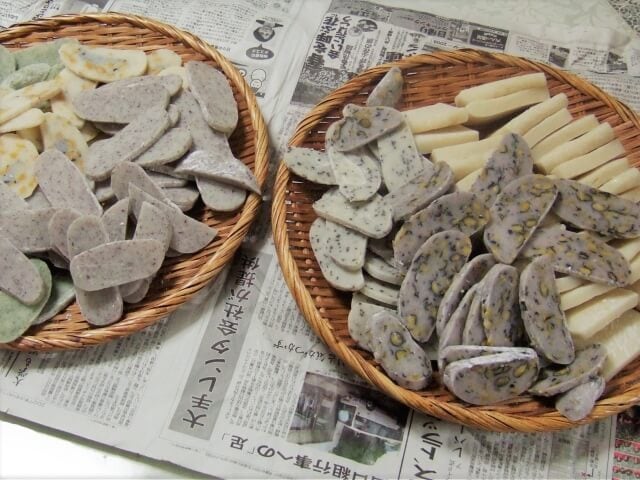
Made as a preserved food for farmers, it has been famous as a snack for a long time. Kakimochi, made by pounding mochi in the coldest season of the year, thinly slicing mochi and hanging it from the eaves and slowly drying it. They heat it first before eating. You can eat it by baking or frying, but you can also cook it in the microwave easily, so you can always enjoy it with a crispy texture.
Kinds and taste of Kaki mochi

Sakura kaki mochi
The cherry blossoms and leaves are pickled in salt to bring out the fragrance. It is a refreshing flavor that the scent of spring passes through the throat.
Noto Dainagon
Softly boiled and roughly chopped dainagon adzuki beans themselves have a simple yet delicious flavor.
Nakashimana
Nakashimana is a traditional Noto vegetable. By drying and powdering the leaves, it has a rich flavor.
Shape of Kaki mochi
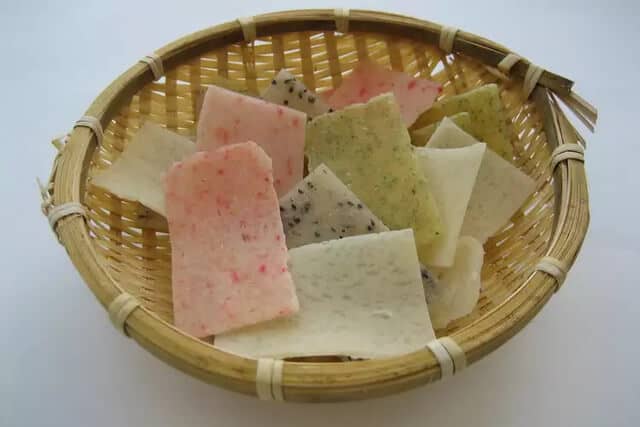
The traditional Kakimochi is rectangular, but the new Kakimochi is a small triangle. Kakimochi’s shape is optimized for heating in a microwave oven. Locals said that it expands to about twice its size when heated.
Where to buy Kaki mochi
Murano Mochiya (むらのもちや)
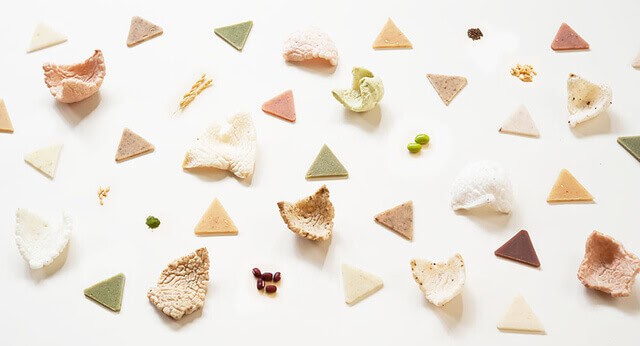
Murano Mochiya will continue to preserve the taste and tradition of Oku-Noto handed down to the present as the local “traditional taste”. They want you to enjoy the rich culture of Oku-Noto, so they have been developing their products with a focus on making “raw” kakimochi. You can enjoy nostalgic yet new flavors with your loved ones.
Osama Confectionery Noda factory (王様製菓)
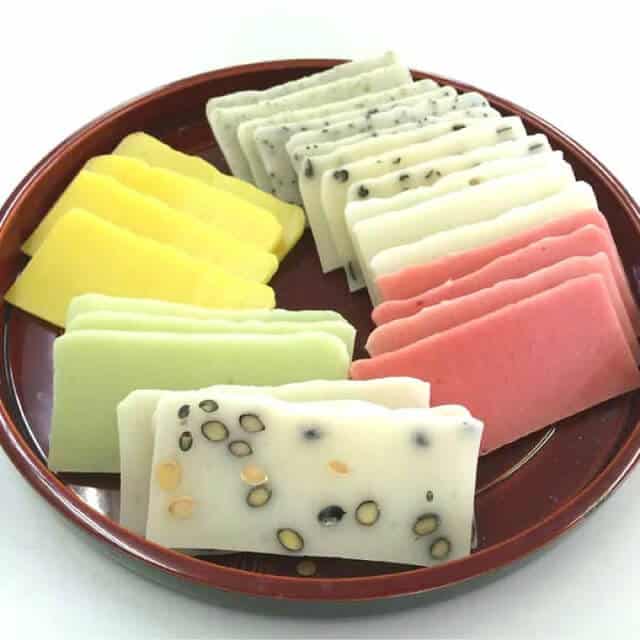
This store have kakimochi which has an assortment of 6 different varieties of oysters made with domestic glutinous rice that brings out the flavors of the seafood and mountain delicacies.
Sawara no Bunpuku (佐原の文福)
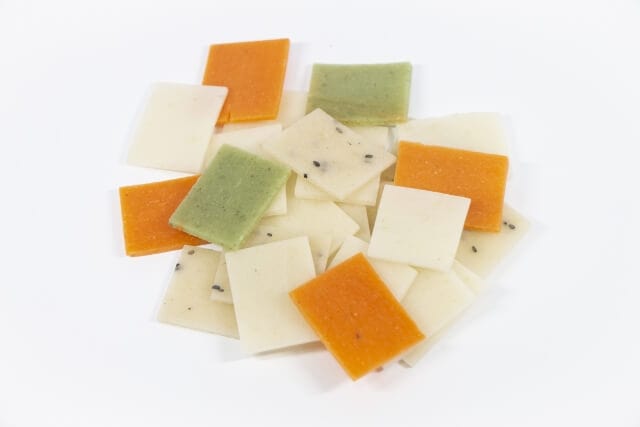
The original farmer’s “grandmother’s straight instructions” are used to make the kakimochi and tagane mochi at Bunpuku. Traditional Sawara farmer products like kakimochi and tagane mochi are sun-dried in the beginning after being prepared from cold mochi. It covers the entire interior. The “real original taste of kakimochi,” which you can find in kakimochi, can be experience delectably with the “skills and taste that have kept the tradition” developed over many years.
Final Thoughts
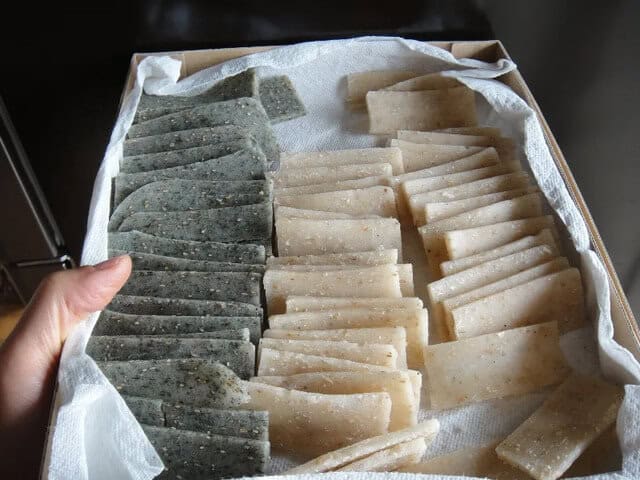
Kakimochi, in which you can enjoy the four flavors of beans, wormwood, shrimp, and sesame, is sliced thinly and packed so that it is easy to bake and eat. These brown, soy sauce-flavored, sometimes seaweed-wrapped, rice crackers may sound like an unreal movie treat, but they are ono — delish — with or without popcorn. In general, Japanese rice crackers are a healthy snack alternative. They are low in calories, provide carbohydrates and have a small amount of protein.
You can try other Japanese sweets or snacks that are similar to Kakimochi, such as Senbei, Hina-arare, and Hishi mochi.
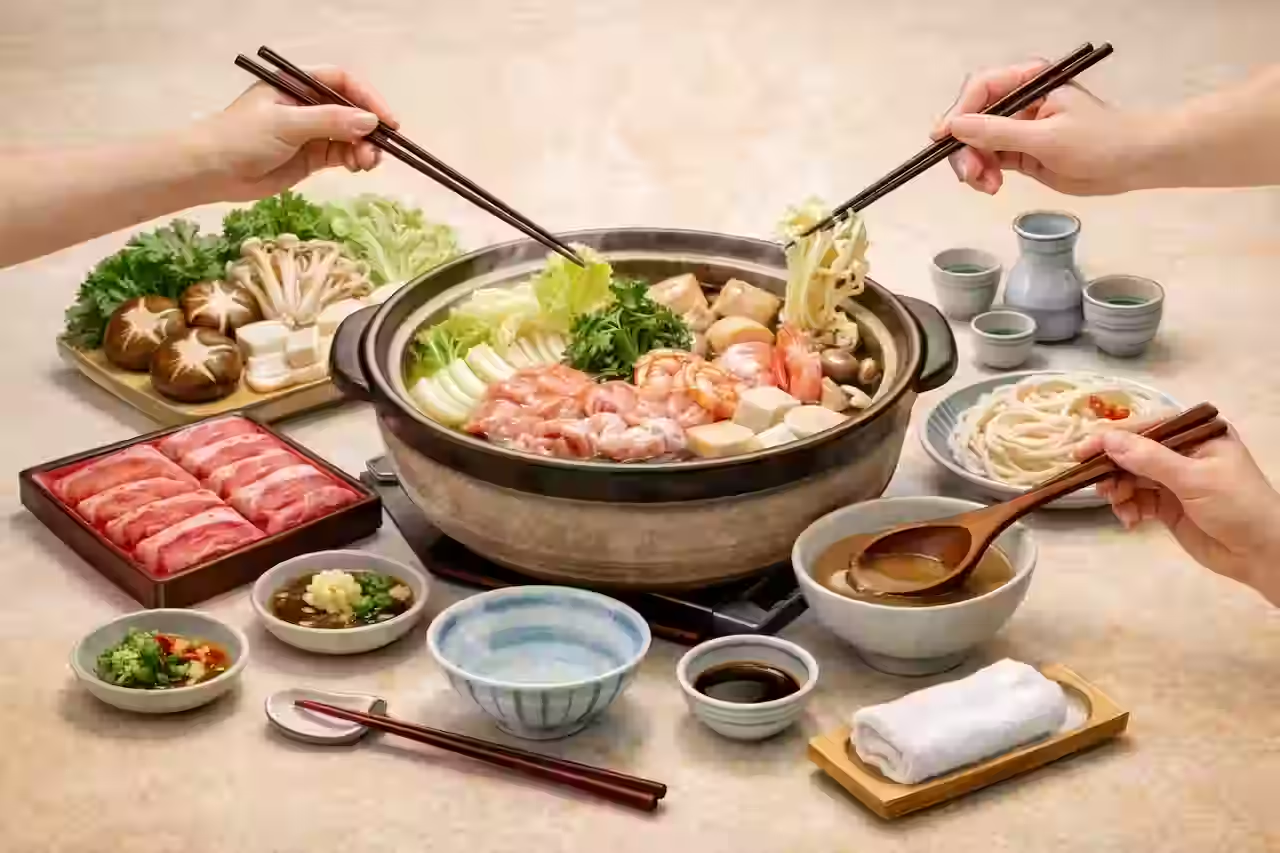
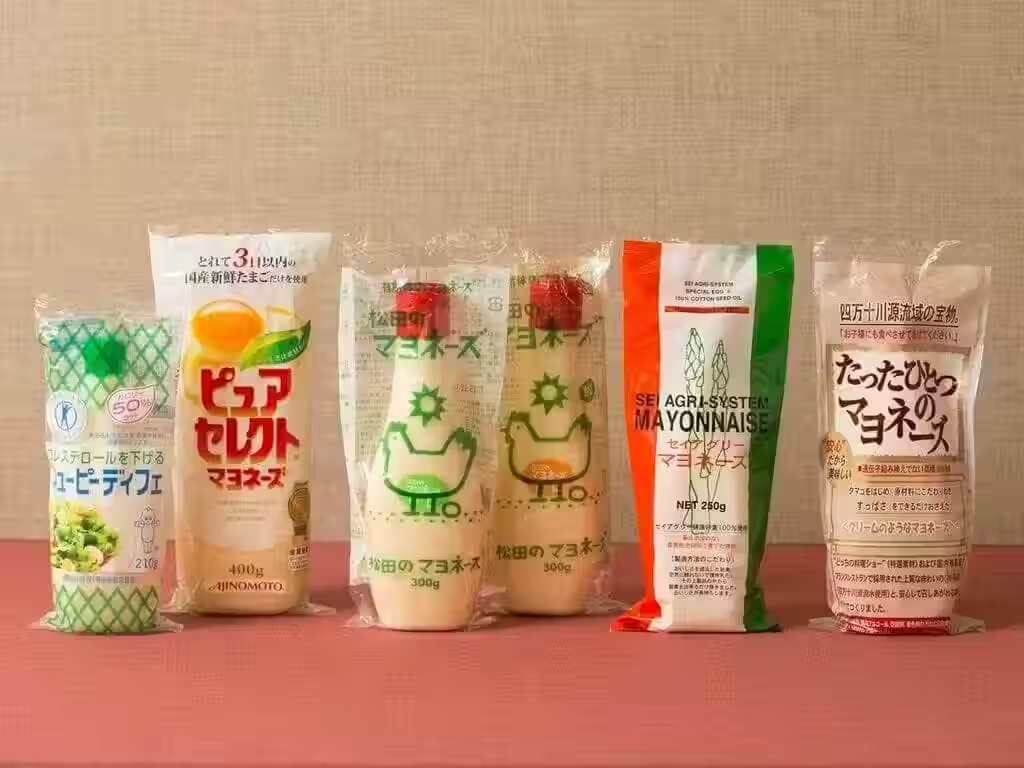
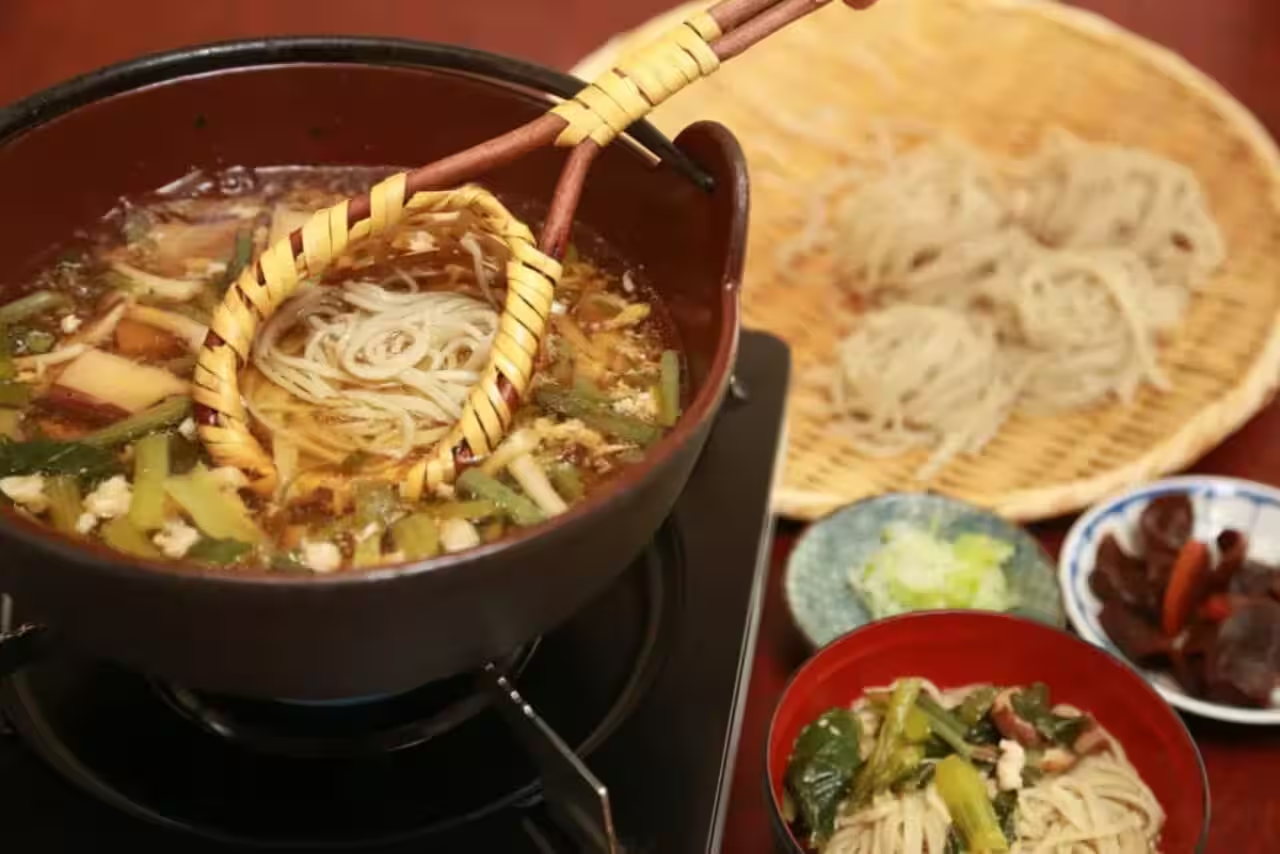

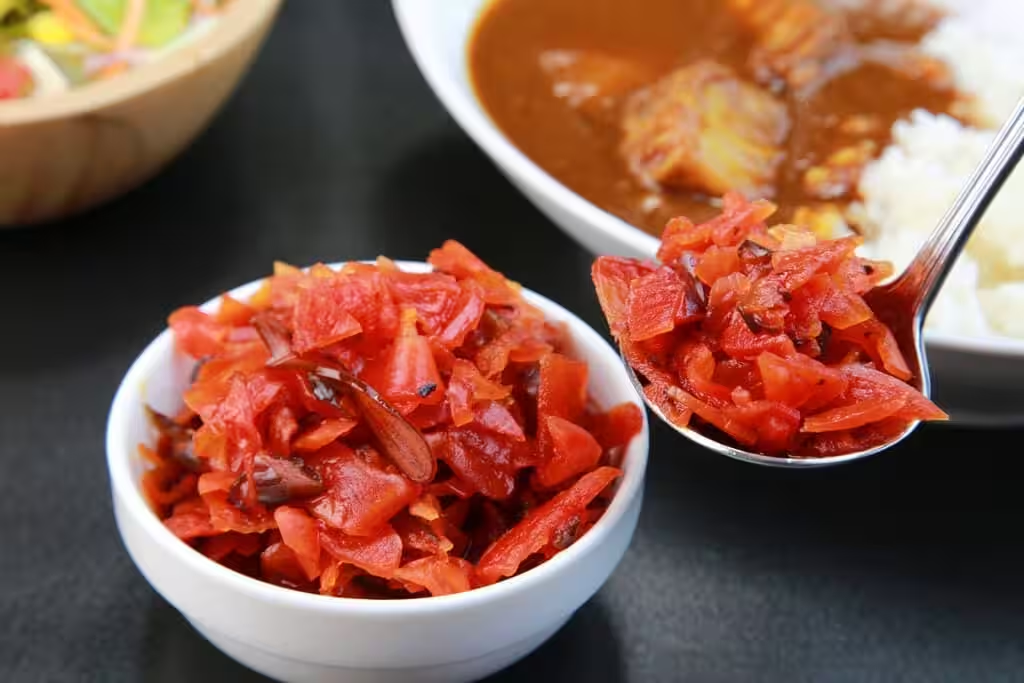

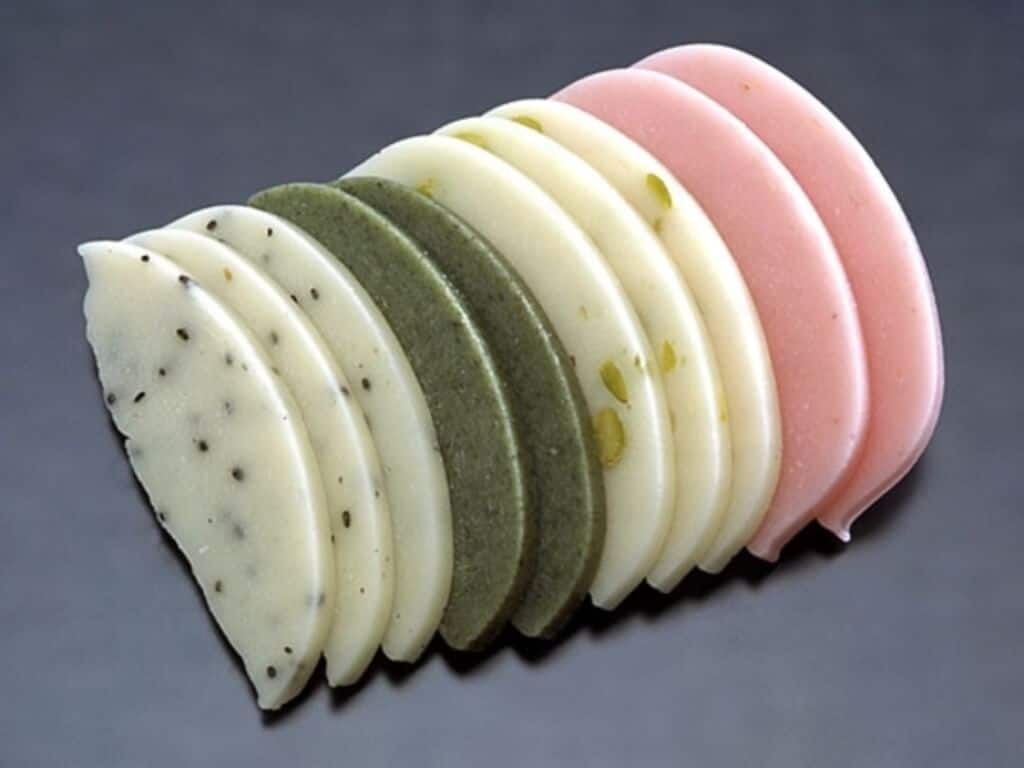
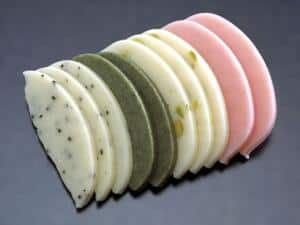
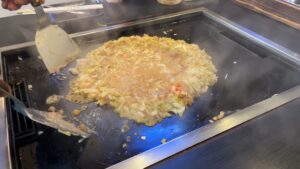
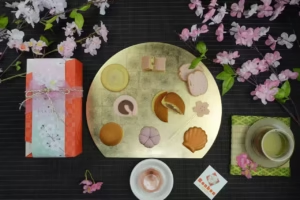
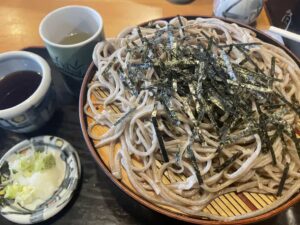
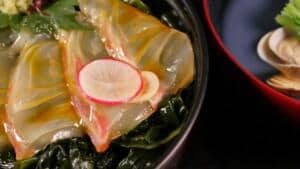

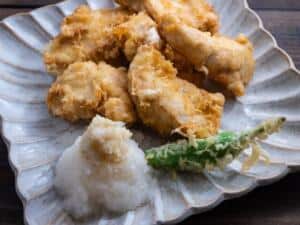
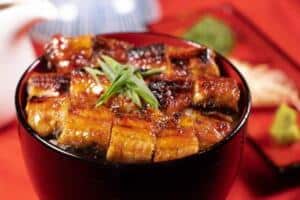
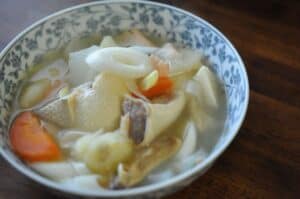
Comments